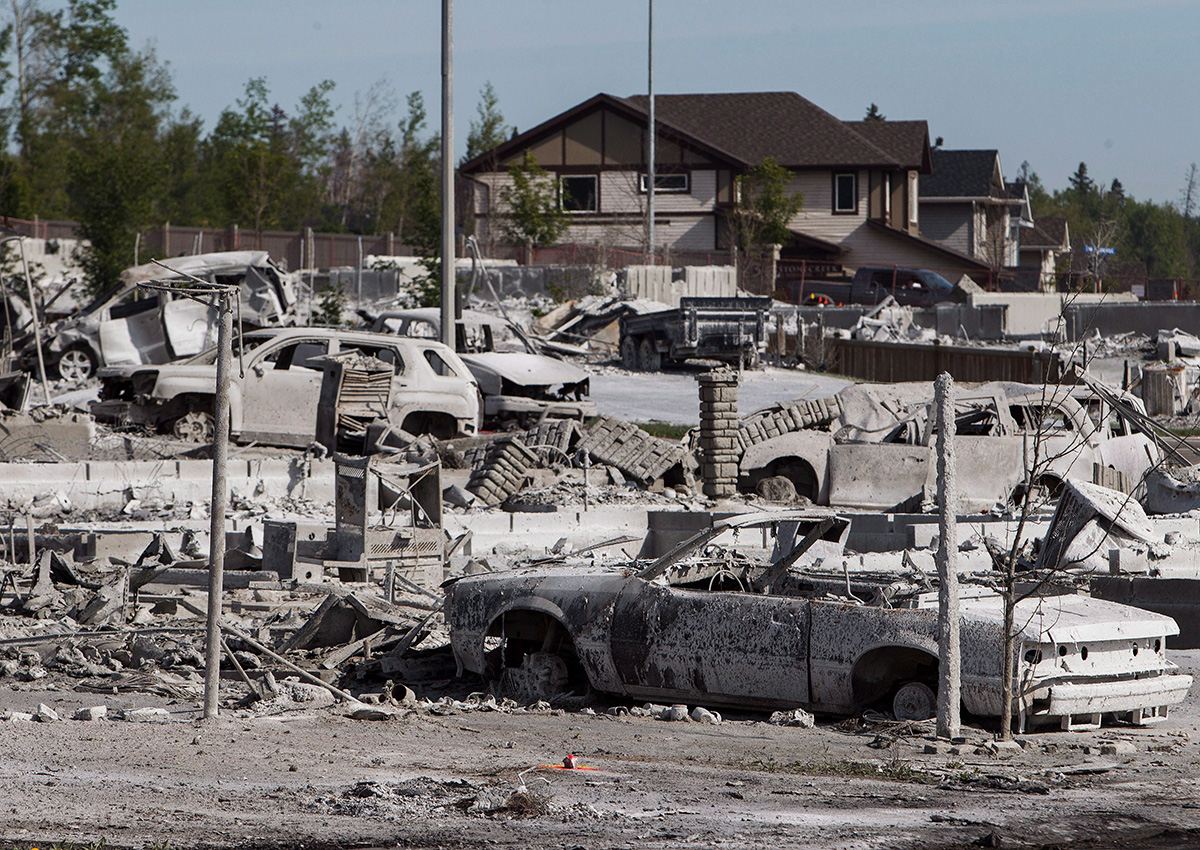CALGARY – Canada’s insurance companies are grappling with an increase in environmental disasters and say property owners most at risk are likely going to have to pay more.

Craig Stewart, vice-president of federal affairs at the Insurance Bureau of Canada, says the industry sees severe weather as a top priority nationally.
“There are clear trends towards a warming atmosphere that have resulted in more significant losses from flooding… and as we’ve seen recently, wildfire,” he said.
The industry is still tallying up the cost of Alberta’s Fort McMurray wildfire, but with claims estimated at $3.6 billion, the costliest natural disaster in Canadian history is already hitting insurers.
READ MORE: Damage from July Prairie storms pegged at $48M by insurers
Joel Baker, president of MSA Research Inc., says this year will likely go down as the worst in decades for Canada’s general insurance sector, which excludes life insurance.
He said that in the first six months of 2016 Canadian insurers reported a $1.08-billion underwriting loss, compared with a $1.05-billion gain for the first six months of 2015.
Much of those losses will in turn be covered by reinsurance companies, which provide insurance for the insurance industry itself. But with a clear trend of increased natural catastrophes, insurance companies are looking for ways to better manage the risk.
Ulrich Kadow, head of Canadian operations at insurer Allianz Global Corporate & Specialty, says the industry is working to improve modelling and catastrophe exposure management to deal with the increased risk and volatility.
“The significance of these fires as a result of climate change is huge,” said Kadow.
“We need to make sure that we are on top of all these trends that evolve and develop.”
He said the industry is responding by looking at adjusting pricing, but hypercompetition in the industry means companies have been limited in how much they can increase rates.
Kadow says the insurance industry is also being squeezed by low returns on investment, a key pillar in the industry’s financial health.
“It’s a double whammy,” he said. “On the underwriting side investments have been squeezed, and on the investment side the picture isn’t much rosier, either.”
Stewart says the industry has been adapting to lower rates for years, and can sustain a hit like the Fort McMurray wildfire, but longer term there are concerns.
READ MORE: Vancouver surgeon challenging B.C.’s ban on private insurance
“The industry’s well equipped to handle events such as Fort Mac. We can absorb it in anygiven year,” he said.
“It’s the cumulative effect of these events that can take a toll, year after year after year.”
He said partnerships with government at all levels is key to reducing future costs of natural disasters, and that IBC has been pushing the federal government to prioritize a national flood strategy as part of the upcoming national climate strategy.
Property owners also need to learn how to protect themselves, whether it’s through fire-resistant shingles or better planning of greenery around the home, while communities also need to plan more for flood and fire mitigation.
“People need to know what their risk is, and they need to be empowered to protect themselves,” said Stewart.
As natural disasters and costs to the industry increase, he says there won’t necessarily be industry-wide rate increases, but companies will have to adjust premiums when they identify areas of greater risk.
“Generally homeowners will start to pay out of pocket as climate impacts become less of a future and more of a present danger,” he said.



Comments